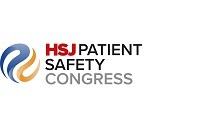By using a support group programme, patients have decreased their levels of depression, anxiety, hospital visits and use of medication. By Helen Payne

The groups offer patients a holistic way of integrating body and mind to nurture wellbeing, helping people to live well with chronic, persistent, bodily symptoms
A new Hertfordshire University spin-off company is delivering proven treatment for high costing patients suffering from chronic physical symptoms without any medical explanation such as fibromyalgia, myalgic encephalomyelitis, irritable bowel syndrome and chronic fatigue.
Pathways2Wellbeing has transferred knowledge from proof of concept, market research and health economy studies into Hertfordshire NHS, and is actively pursuing other clinical commissioning groups in the UK.
Costly conditions
Based on research conducted at the university, the establishment of treatment groups via the quality, innovation, productivity and prevention initiative demonstrates that patients are committed to attend short term group work.
The approach uses the relationship between body and mind to facilitate change in perceptions of their symptoms to help them to live well and cope better.
‘Repeated consultations and tests only reinforce that there is a diagnosis but it just has not been found yet’
These patients, who fall into the category of long term conditions, are very costly to the NHS and often, not surprisingly, present as depressed or anxious – it is no wonder as they have frequent GP visits, hospital appointments and medications.
Many do not have a psychological explanation for their symptoms and repeated consultations and tests only reinforce that there is a diagnosis but it just has not been found yet.
Through these groups savings of about 17.6 per cent can be made based on what is normally spent on these patients and about the saving for one GP’s consultation time for these patients is reduced by about 66 per cent, based on 2008 figures.
Potential savings
The potential savings per GP per year from using Pathways2Wellbeing groups for all medically unexplained symptoms patients is 383 hours in consultation time and includes savings of:
- £70,757 for consultations;
- £22,537 for prescriptions;
- therefore the total savings for medically unexplained symptoms patients per GP per year is £93,294; and
- GPs have an increased capacity – approximately 383 hours per year per GP – and hospital referral letters, tests, scans and appointment costs are saved amounting to approximately £133,000 for every 30 patients.
The intervention
The approach makes it accessible to both psychologically resistant and psychologically minded patients.
It starts with finding out the patient’s own sensory experiences of their body using experiential learning and reflection within a supportive group led by an experienced, trained, masters-level health professional facilitator.
The groups offer patients a holistic way of integrating body and mind to nurture wellbeing; helping people to live well with chronic, persistent, bodily symptoms.
‘The group promotes a new relationship with symptoms, expanding the patient’s inner resources’
The aim is to facilitate alternative connections between physical symptoms and patient perception of their symptoms based on creative practices, which develop mindfulness, body awareness, activity, self-regulation and stress reduction, reflection and meaning making.
In this way the group promotes a new relationship with symptoms, expanding the patient’s inner resources.
Benefits for patients include:
- increased activity and wellbeing levels;
- reduced medication;
- improved social support;
- decreased depression and/or anxiety;
- improved self management; and
- overall general functioning.
Sessions explained
The practice based evidence via the quality, innovation, productivity and prevention programme has been strikingly positive so far, supporting the research findings.
Patients learn to self-manage so they do not need to see their GP for their symptoms following the group session and at the six month follow up.
In the meantime they may agree to attend the group for support and find they commit to attend almost all sessions.
They enjoy meeting other patients and exploring their symptoms together. No one has to disclose their symptoms but they do have to open their minds to the possibility that the symptom may have a purpose and be willing to creatively examine this.
Case study: From wheelchair to horseriding again after group sessions
MR is a 20 year old woman. Her family is filled with step siblings and half siblings. She suffered continuous physical and emotional violence at the hands of her father from a young age. She had many physical symptoms as well as depression and was confined to a wheelchair.
Her passion was horseriding and she was studying midwifery – both interrupted as she was not able to do either safely due to frequent spasms that would put her off balance and result in falls.
Several medications were prescribed to help her dystonia to alleviate muscle pain, stop tremors, relax her jaw but her condition did not improve. She had neurological scans and investigations with no results forthcoming.
Her mother had to accompany her everywhere. She visited the GP almost every week. Emotionally she was drained from her traumatic past and being confined to a wheelchair.
In the group she showed enormous energy, used her good humour to hide her feelings and appeared to be incredibly optimistic. She developed new ways of coping with her condition, and seemed empowered by being allowed to lead others to mirror movements of her choice.
She could talk and share her positive and negative experiences quite freely. In the sessions when her body went into spasm or her leg or arm jerked she got scared and forgot to breathe.
Gradually the facilitator taught her to recover her breathing, gently touching her back and encouraging her to breathe. She actively participated in all the practices from the wheelchair or by sliding from the chair onto the floor.
After a few weeks of attending the group she felt confident enough to start horseriding again. Her post-group assessments demonstrated a considerable improvement in her depression and activity levels.
She was able to self mange her condition and did not return to her GP as a result.
Her medication dosage reduced substantially. She remained fearful to acknowledge her feelings towards her father, and her mother to some extent because she had failed to protect her.
It was suggested that some form of long term psychotherapy might prove helpful and this appeared to have been acted upon during the follow-up.
Symptoms include palpitations, panic attacks, chest, abdominal, joint and muscular pain, skin conditions, dizziness, tinnitus, numbness, headache and backache.
The groups run for 12 sessions over eight weeks, a five day residential stay or two weekends.
There is a pre-group assessment and individual meeting with the facilitator. Post-group, another clinical assessment is conducted and an exit meeting takes place individually with the facilitator to draw up an action plan tailor made with each patient.
In the second phase, further support is provided to patients while implementing their action plan and a follow-up assessment at six months after the group sessions gauge whether the patient might require a self-help group.
All assessments are conducted with standardised instruments similar to those used in Improving Access to Psychological Therapies services.
Exploring symptoms
Patients are encouraged to practice various techniques, including relaxation such as guided imagery, body awareness exercises such as breathing and mindful movement to help positive reassociation with the body.
There are also exercises designed to encourage appreciation of the nature of their symptom, such as taking up a physical stance to represent one quality of their symptom. This leads to an exploration of their relationship to the symptom such as a role-play dialogue and examining the symptom’s purpose through creative media such as collage and clay modelling.
‘These practices lead to a new perception and understanding of the symptom which can be employed to consider how patients might change aspects of their lifestyle’
Integration of the symptom takes place by learning to reassociate in a new way. For example, seeing symbolic body language.
These practices lead to a new perception and understanding of the symptom, which can be employed to consider how patients might change aspects of their lifestyle.
They are encouraged to design a personal action plan for changes to lifestyle in order to increase self management and coping strategies. As a result there is an improved quality of life, patients feel better and can do more on a day to day basis.
Overall improvement
It is worth noting that there are improvements from base line (pre-group assessment) in all areas. Particularly significant are improvements in the scores from pre- to post-group for decreased levels of depression, anxiety, GP and hospital visits, symptom severity and use of medication.
There are also improved feelings of overall wellbeing, social support, activity levels and global functioning.
Fewer GP and hospital visits increases GP capacity, freeing up time for GPs to help those patients they can help and reduces frustration for them improving their work experience.
For patients the increased feelings of wellbeing, decreased anxiety and depression and improvement in activity levels show patients were able to do more and feel better as a result of the group experience.
They were pleased they were taking less medication, had fewer hospital visits and did not need to see their GP as symptom distress reduced. They were more capable of self-managing their symptoms as a result of feeling better.
Another important feature worth noting is that the improvements made were not only sustained at three months post-group, but patients report continued improvement at the six month stage, highlighted in the six month post-group follow-up data analysis.
Professor Helen Payne is director of clinical services at Pathways2Wellbeing



























2 Readers' comments